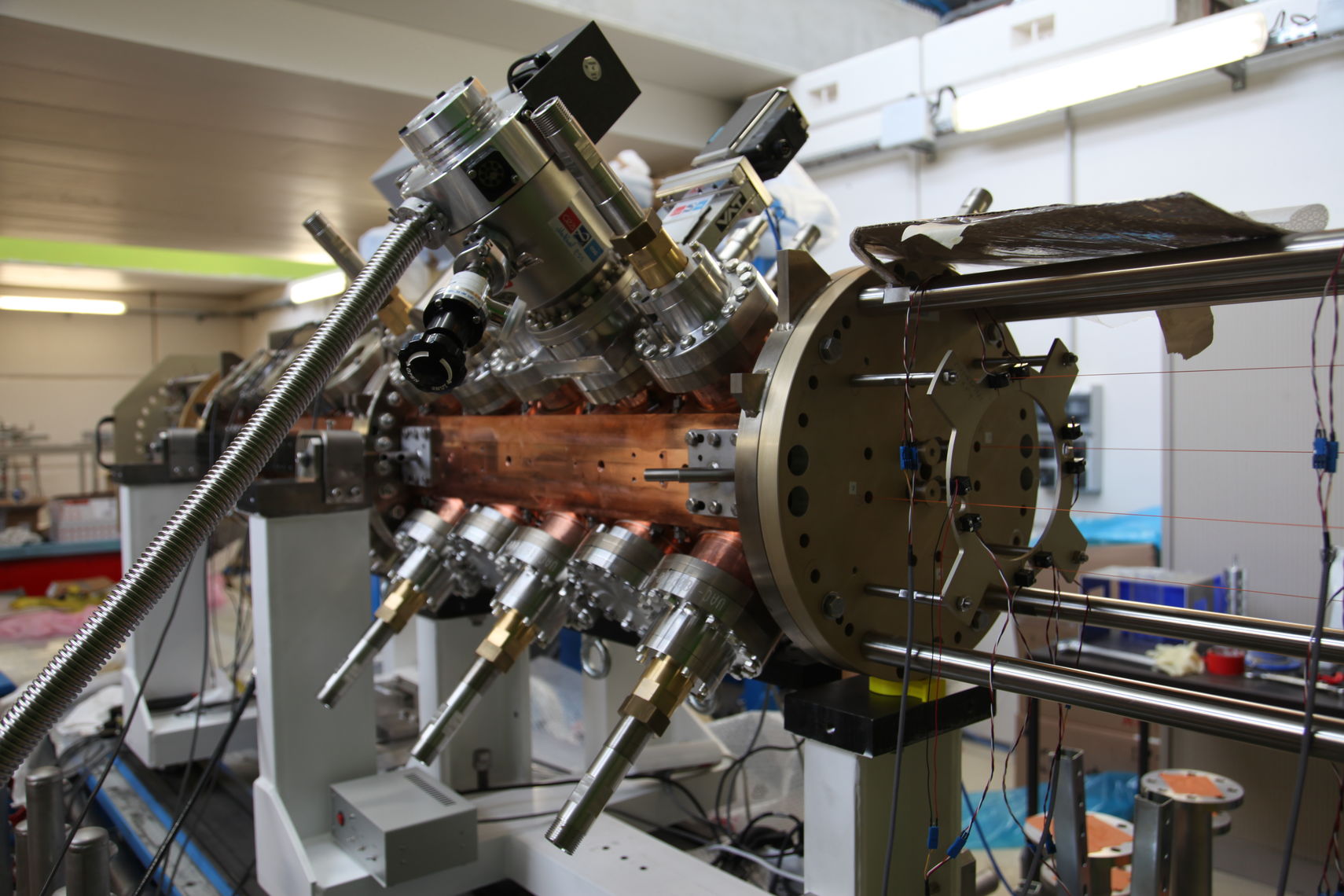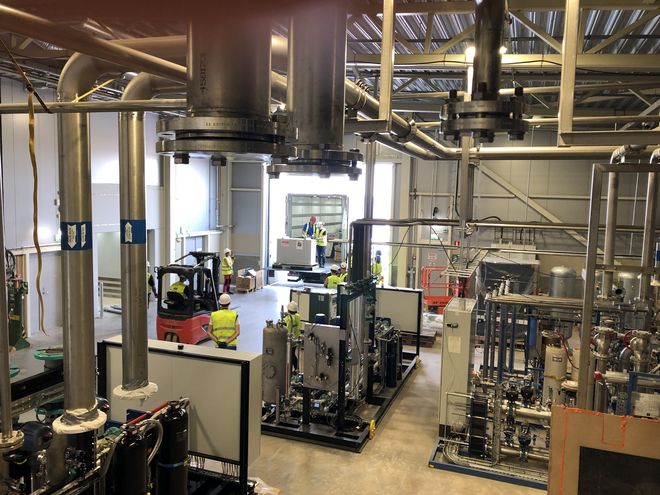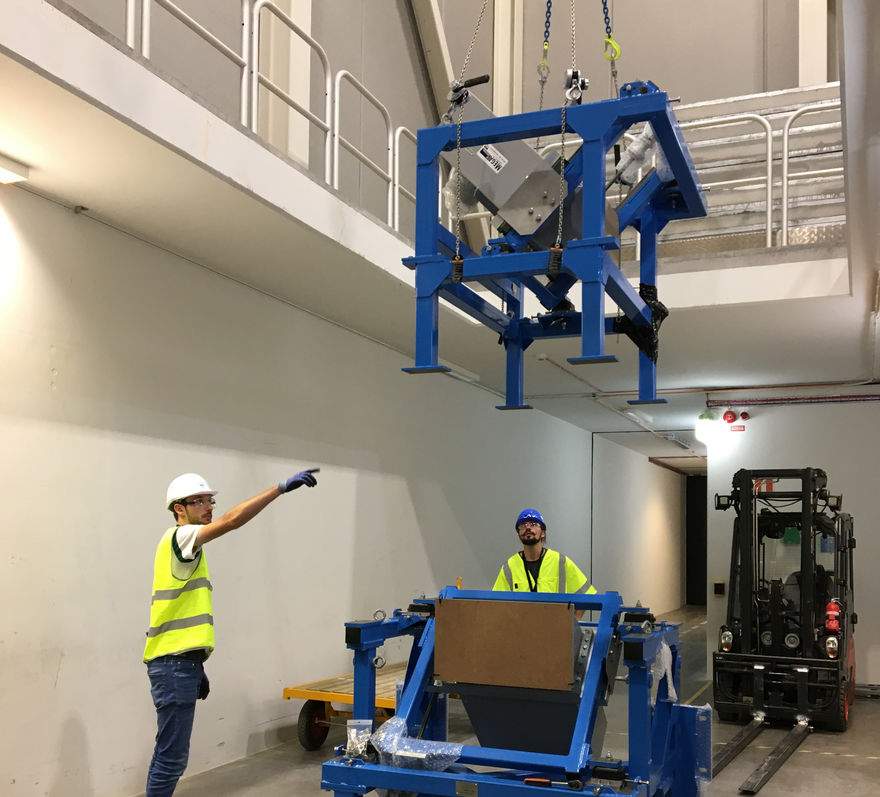
A key accelerator component has been delivered to ESS as part of France's in-kind contributions to the next-generation research infrastructure. The Radio Frequency Quadrupole (RFQ) is the first accelerating structure in ESS's linear accelerator and has been designed, developed and manufactured by French in-kind partner CEA at its research institute IRFU (Institute of Research into the Fundamental laws of the Universe).
The RFQ arrived yesterday after a three-day-long journey from CEA Saclay’s research institute, IRFU, outside Paris. France is one of the leading nations in the area of neutron research, and the delivery demonstrates the long-standing French engagement in the future success of ESS. Two of the largest research organisations in France, CEA and CNRS, are highly involved in developing technical contributions for the linear proton accelerator, the neutron scattering instruments and the integrated control systems at ESS.
“France is a leading scientific nation with great experience building and hosting large research infrastructures, and a vital and strongly committed member of ESS,” said John Womersley, ESS Director General. “The RFQ delivered from our partner CEA-IRFU is proof of the unique scientific and technological capabilities of French national research institutes and industry.”
ESS will provide unique research opportunities within materials research for thousands of scientists from all over the world, benefitting the development of better batteries, new medicines and more sustainable materials, among other things. 13 ESS member countries together fund and build the research infrastructure, to a large extent by in-kind contributions through technical equipment, services and personnel.
“ESS is of great importance for France as a member country with one of the largest neutron user communities in Europe. CEA-IRFU is very proud to contribute at a high level to the construction of the world’s most powerful neutron source with strong involvement in the construction of the superconducting Linac, the RFQ and the beam diagnostics,” said Anne-Isabelle Etienvre, IRFU Director. “The delivery of the RFQ is an important milestone, the result of a collaborative effort with French industry.”
The collaboration between ESS and CEA-IRFU began in 2010, as part of a pre-construction agreement with France. IRFU is one of the world’s leading RFQ experts, and have delivered RFQ’s to other major research infrastructures, such as CERN and French GANIL. IRFU is one of the main in-kind contributors to ESS and will also deliver the elliptical superconducting linear accelerator structures; 30 eight-metre-long cryomodules, as well as beam instrumentation and control systems for the Accelerator.
“IRFU is one of the world leaders in RFQ design and production, so it was natural for us to set up a partnership with them,” said Mats Lindroos, ESS Head of Accelerator. “Over the years we have overcome many challenges and I am extremely satisfied to see this technical masterwork delivered to ESS today.”
The RFQ is a key component in the normal conducting part of ESS’s 600-metre-long linear accelerator, which focuses, bunches and accelerates the proton beam generated in the Ion Source. The RFQ transforms the continuous proton beam to a pulsed beam, which is passed on to the following accelerator section, the Medium Energy Beam Transport (MEBT), where the beam characteristics are diagnosed and optimised before further acceleration on the way to the superconducting part of the accelerator. The MEBT was developed by the Spanish in-kind partner ESS-Bilbao and installed during the summer.
“The RFQ is made of five sections of four brazed poles in ultra-pure copper and stainless steel of about one metre each machined with a mechanical precision of a few tens of micrometres, “ said Christophe Mayri, CEA-IRFU project manager for the ESS RFQ. “The realisation of the quadrupoles took more than three years, involving more than 15 people in close collaboration with the industrial company Mecachrome.”
The full assembly and installation of the 4.6-metre-long RFQ will start this week, performed by a team from IRFU with support from the ESS Installation team. When the installation works are finalised in the autumn, extensive testing of the RFQ will follow.


























